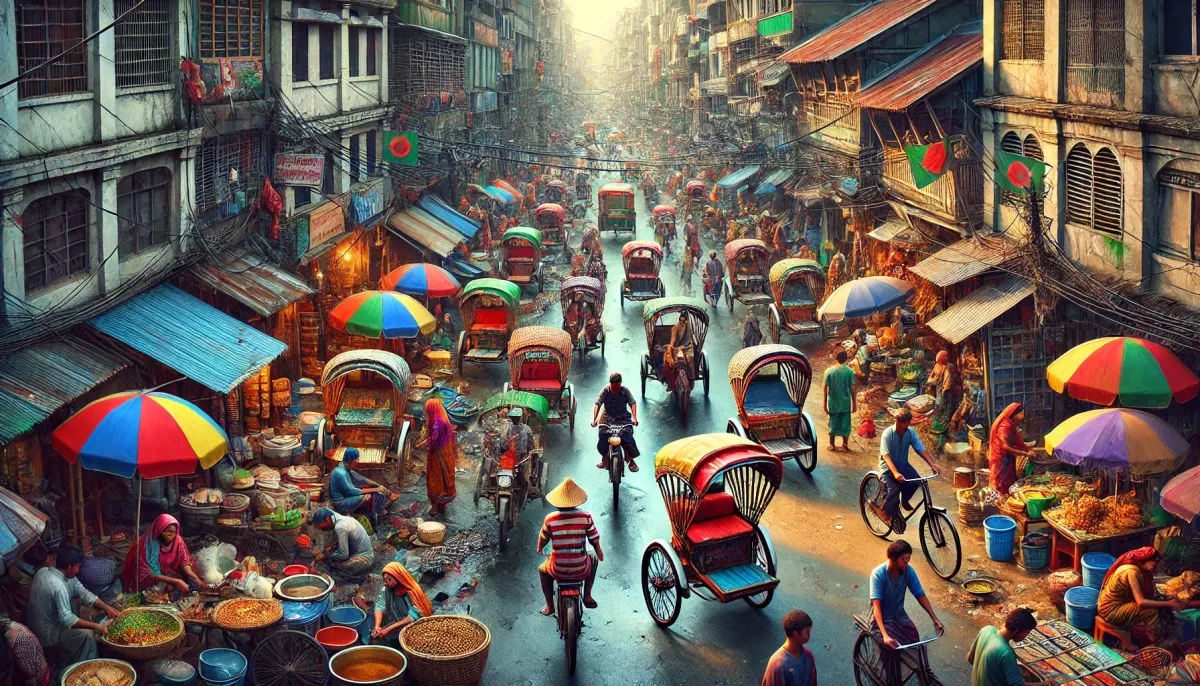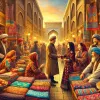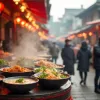Bangladesh, nestled between Myanmar and India, and bordering the Bay of Bengal, is a land of contrasts. Its fertile, river-crossed landscape supports a dense population, but economic progress has been slow due to overpopulation and a rigid social hierarchy. On my second visit to this South Asian nation, I delved into the complexities of life in Bangladesh, experiencing both its vibrant culture and its heartbreaking poverty.
Dhaka: The City of Rickshaws
Dhaka, the capital and largest city, is one of the most densely populated areas in the world. The sheer number of colorful rickshaws navigating the narrow streets is a sight to behold. Nearly a million of these vehicles weave through the city daily, earning Dhaka its nickname, "The City of Rickshaws."
The city’s density makes transportation a fascinating study. While the network is extensive, the vehicles themselves are often old and worn. The prevalence of rickshaws isn’t just a cultural quirk; it’s a practical solution to the constant traffic congestion. As a foreigner, I’ve learned to negotiate fares beforehand to avoid being overcharged – a common occurrence. Though I've been taken for a ride before, I try to remember the drivers' difficult lives and offer a little extra whenever possible.
The Sweet Nectar of South Asia
One of my favorite experiences in Bangladesh is enjoying fresh sugarcane juice, or Aakh. Street vendors expertly peel and crush the cane through old machines, extracting the sweet nectar. The process is fascinating, and the juice itself is incredibly refreshing in the South Asian heat. While the hygiene standards might not be what Westerners are used to (recycled glasses, flies buzzing around), it's a truly authentic local experience. Given the average income of about $70 USD per month, disposable cups are a luxury many vendors can’t afford.
| Detail | Description |
|---|---|
| Sugarcane Juice | Freshly squeezed, a popular local beverage |
| Preparation | Cane peeled and crushed through a machine |
| Cost | Very affordable |
| Hygiene | May not meet Western standards (recycled glasses, flies) |
| Local Significance | An important and traditional drink, deeply ingrained in Bangladeshi culture |
From Street Food to Fine Dining: A Culinary Adventure
Food in Bangladesh is a vibrant mix of flavors and traditions. From street vendors selling curried fruits and aloo chaat (potato snacks) to family-run restaurants along the Buriganga River (known locally as the “River of Life,” despite its current polluted state), there's something for everyone. I even ventured into a surprisingly upscale, empty restaurant near the Dhaka Taj Mahal. The menu featured Westernized dishes like fried chicken and pasta, a stark contrast to the traditional fare I'd been enjoying.
My most memorable meal was shared with a local along the river. Eating hand-held rice with him, while dodging flies and navigating the less-than-sanitary conditions, was a truly humbling experience. He was initially hesitant to share his meal, perhaps due to perceived social differences, but I insisted. The warmth of that simple meal, despite the circumstances, is something I won’t forget. This experience highlighted the stark contrast between the lives of the wealthy, who can afford such luxuries, and the majority of the population struggling to make ends meet.
The Digital Divide and the Prevalence of Chinese Tech
It’s impossible to ignore the prevalence of Chinese technology in Bangladesh. Huawei, Xiaomi, Vivo, and Oppo phones are everywhere. While Huawei is ubiquitous, locals seem to favor Xiaomi, and Vivo is particularly popular among the younger generation. This reflects a global trend of Chinese tech making inroads into developing markets. It's a testament to the affordability and features these brands offer. Even tools and small manufactured goods often bear the "Made in China" label.
Poverty and Resilience: A Story of Hope
Despite the economic hardships, the people of Bangladesh possess incredible resilience. They mend their shoes instead of buying new ones, resourcefully transport goods using traditional methods, and find shelter where they can, even in concrete pipes. Witnessing children with radiant smiles despite their difficult circumstances is a powerful reminder of the human spirit's ability to find joy even in adversity.
The widespread poverty, however, is a serious concern. The devastating fire that ravaged a Dhaka slum, leaving thousands homeless, underscores the precariousness of life for many. Education is crucial for breaking this cycle of poverty, yet millions of children remain out of school.
A Land of Contrasts: My Final Thoughts
Bangladesh is a nation grappling with immense challenges. Its congested streets, polluted rivers, and widespread poverty paint a bleak picture. Yet, the warmth of its people, their resourcefulness, and their enduring spirit offer a glimmer of hope. As I continue my travels, I carry with me a deep appreciation for the resilience of the Bangladeshi people and a renewed commitment to understanding the complex realities of our world. Bangladesh is a country that stays with you, a reminder of both the beauty and the struggles of humanity.







